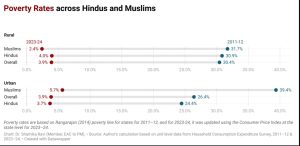
By Shamika RAVI
Contrary to popular belief, democracy is about far more than holding elections or ensuring the peaceful transfer of political power. At its core lies the duty of elected representatives to respond to the fundamental needs of all citizens – especially the marginalized and vulnerable – regardless of their political or religious affiliations.
Reducing poverty and fostering inclusive development are critical to fulfilling this democratic responsibility.
It is important to recognize that poverty is not merely a lack of income and access to basic necessities. It denies individuals dignity, blocks social mobility, and prevents full and equal participation in society. Viewed from this perspective, poverty reduction is a useful metric for evaluating a government’s accountability.
India offers a striking case study. During Prime Minister Narendra Modi’s 11 years in office, the country has experienced rapid economic growth. But has that growth been truly inclusive? Has it meaningfully improved the lives of the most disadvantaged?
In 2014, an expert group led by former Reserve Bank of India Governor Chakravarthi Rangarajan introduced a new metric for measuring poverty, providing a valuable tool for assessing the Indian government’s progress. Known as the “Rangarajan line,” it incorporates three features that make it a reliable benchmark. First, it uses the Modified Mixed Recall Period (MMRP) method, which relies on detailed expenditure data across a wide range of goods and services to yield an accurate overview of actual consumption patterns.
Second, the food component of the Rangarajan line is based on the Indian Council of Medical Research’s dietary guidelines, ensuring that the poverty threshold reflects basic nutritional needs. Lastly, Rangarajan’s urban poverty line gives appropriate weight to essential non-food costs such as education, housing rents, transportation, fuel, and health care.

We use the state-level Consumer Price Index data for each component, to account for both food and non-food inflation, to estimate poverty levels over time. The consumption data is based on the robust and nationally representative data of the Household Consumption Expenditure Surveys from 2011-12 and 2023-24 conducted by the Ministry of Statistics and Programme Implementation.
The analysis reveals a dramatic decline in poverty over the past 12 years, with the rural, urban, and national rates all converging around 3.9% in 2023-24 – down from 30.4%, 26.4%, and 29.5% in 2011-12, respectively. In absolute terms, 302 million people have been lifted out of poverty in India over the past 12 years.
Even when looking at the intensity of poverty, there has been a significant improvement, with the poverty gap narrowing from 18.4% in 2011-12 to 10.2% in 2023-24. That means the average poor person is now much closer to the poverty line than they were a decade ago, implying a meaningful improvement in well-being even among those still living below it.
These figures also reveal substantial reductions in poverty across religious communities, particularly among India’s two largest groups, Hindus and Muslims. In rural areas, the poverty rate among Muslims was 31.7% in 2011-12, slightly higher than the 30.9% rate among Hindus. By 2023-24, this trend had reversed, with poverty among rural Muslims plummeting to 2.4%, while the rate for Hindus stood at 4%.
The shift has been similarly pronounced in urban areas. In 2011-12, 39.4% of urban Muslims lived below the poverty line, compared to 24.4% of Hindus. By 2023-24, the poverty rate among urban Muslims had fallen to 5.7%, while the rate for Hindus decreased to 3.7%, narrowing the gap between the two groups from 15 percentage points to just two.
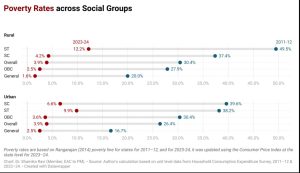
There has also been a marked improvement in poverty rates across social categories, such as Scheduled Tribes (STs), Scheduled Castes (SCs), and Other Backward Classes (OBCs) – groups recognized as socially or educationally disadvantaged – as well as the General category, which includes communities that do not fall under these classifications. In rural areas, the ST community had the highest poverty rate in 2011-12, at 49.5%, followed by SCs and OBCs. By 2023-24, the poverty rate among STs had declined to 12.2%. For the General category, it fell from 20% to 1.6%
As a result, the ST-General gap narrowed from 29.5 percentage points in 2011-12 to 10.6 in 2023-24. Likewise, the poverty gap between SCs and the General category fell from 17.4 percentage points to 2.6, indicating greater economic inclusion.
Here, too, urban areas experienced similar improvements. In 2011-12, SCs had the highest urban poverty rate, at 39.6%, while the rate for the General category was 16.7% – a gap of nearly 23 percentage points. By 2023-24, the poverty rate among SCs in urban areas had dropped to 6.6%, compared to 2.5% for the General category. Over the same period, poverty among urban STs and OBCs fell from 38.2% to 9.9% and from 30.4% to 3.6%, respectively.
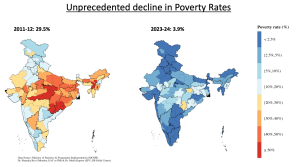
The decline in poverty across all religious and social groups over the past decade reflects the combined effects of sustained economic growth and targeted welfare interventions. Despite episodes of political polarization and persistent identity-based tensions, the data point to a more inclusive development trajectory than is widely recognized.
The reduction in poverty among Muslims – one of India’s most disadvantaged urban communities – is particularly notable. It indicates that government policies, both universal and targeted, have benefited people across religious lines. Similarly, the narrowing of poverty gaps between historically marginalized castes reflects meaningful progress toward greater equality.
All of this suggests that the Modi government’s policies have benefited all segments of Indian society, not just select political constituencies or groups. The data support the view that its economic policies have been broadly inclusive, resulting in widespread welfare gains. By ensuring that all segments of society enjoy the benefits of growth, India is upholding the dignity of every citizen and fulfilling a fundamental responsibility of democratic governance.
Shamika Ravi is a member of the Economic Advisory Council to the Prime Minister of India.
The post India is winning the fight against poverty appeared first on The Business & Financial Times.
Read Full Story
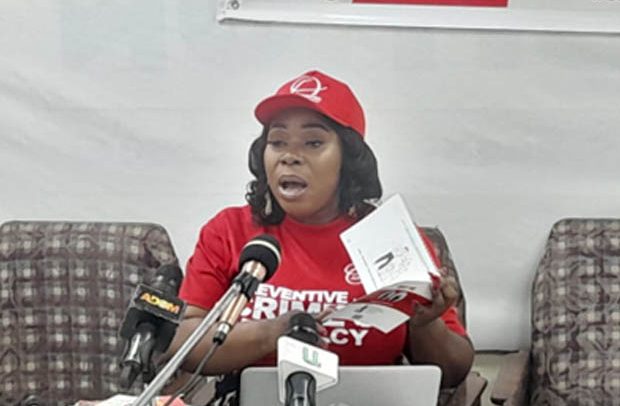

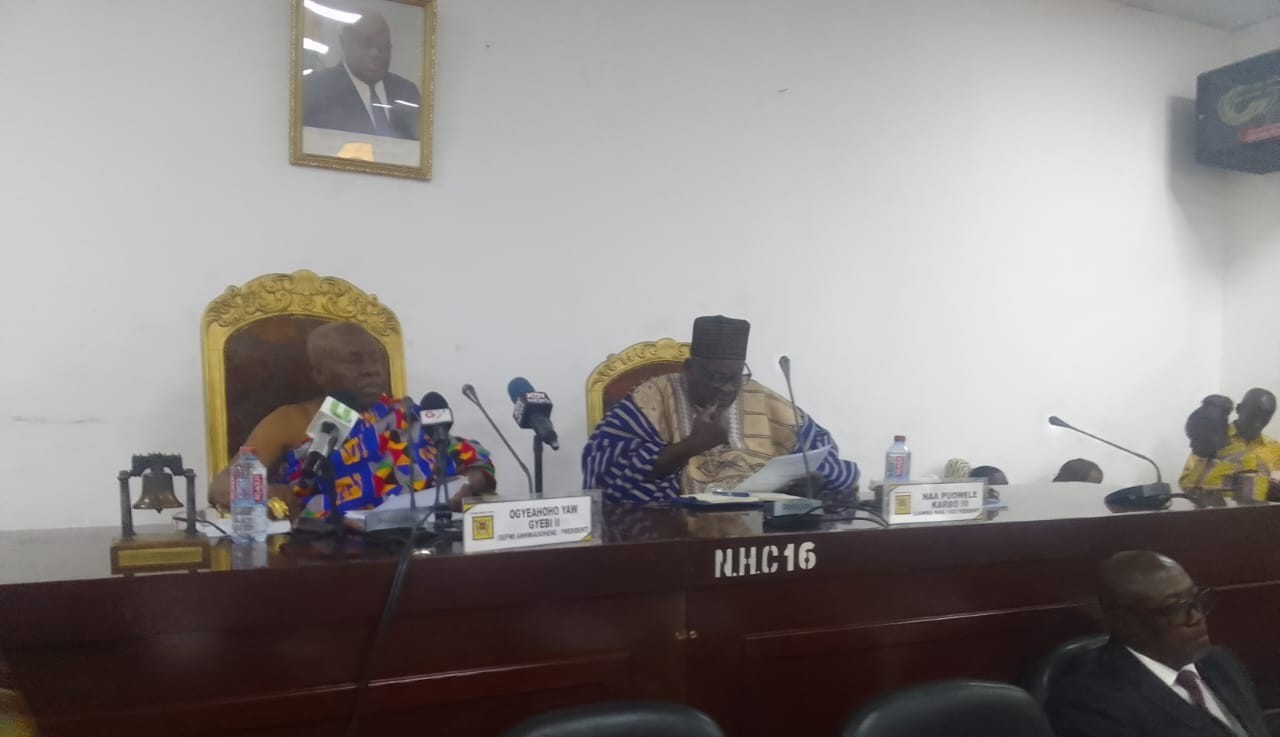
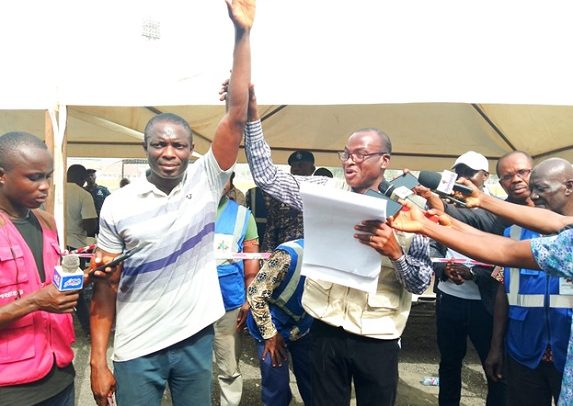
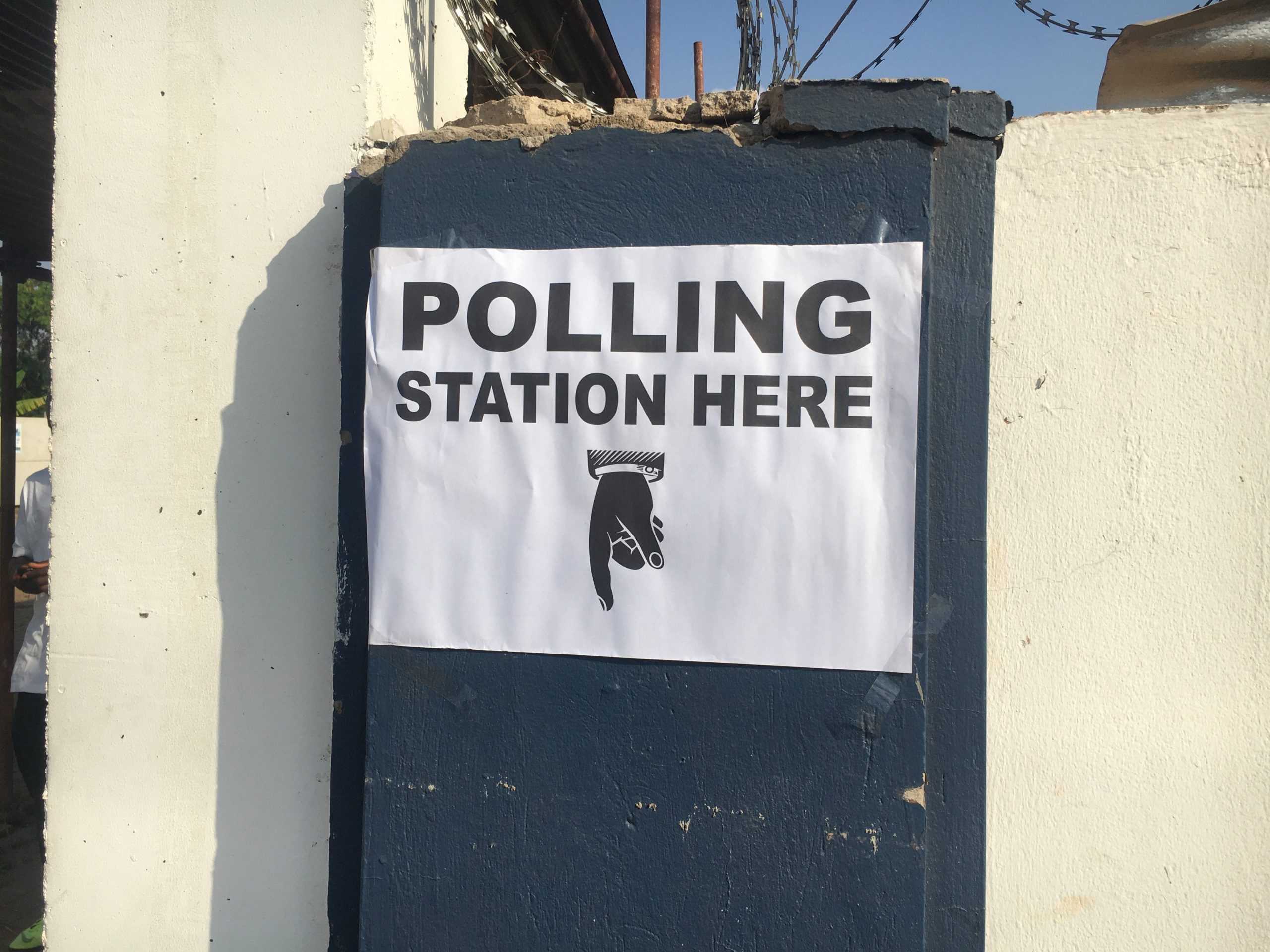




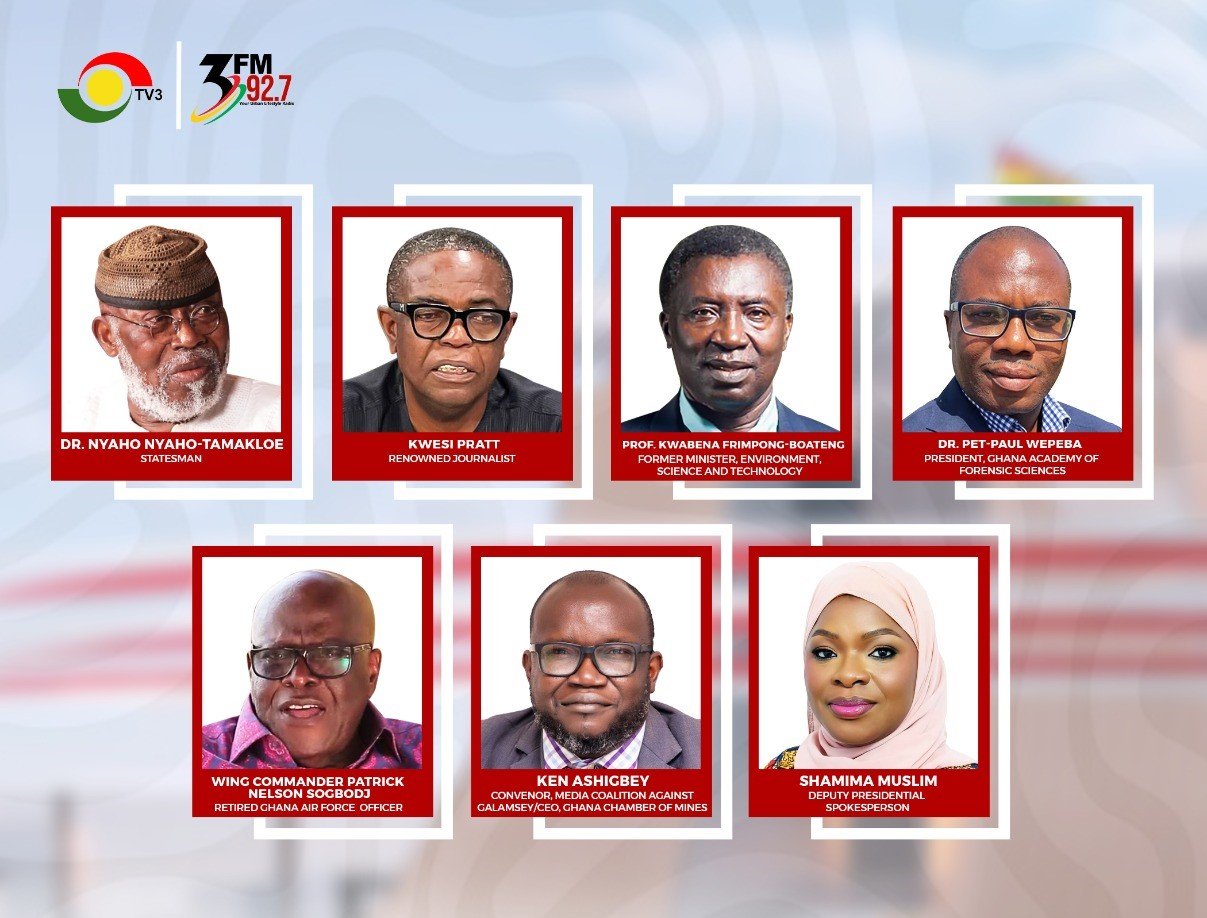

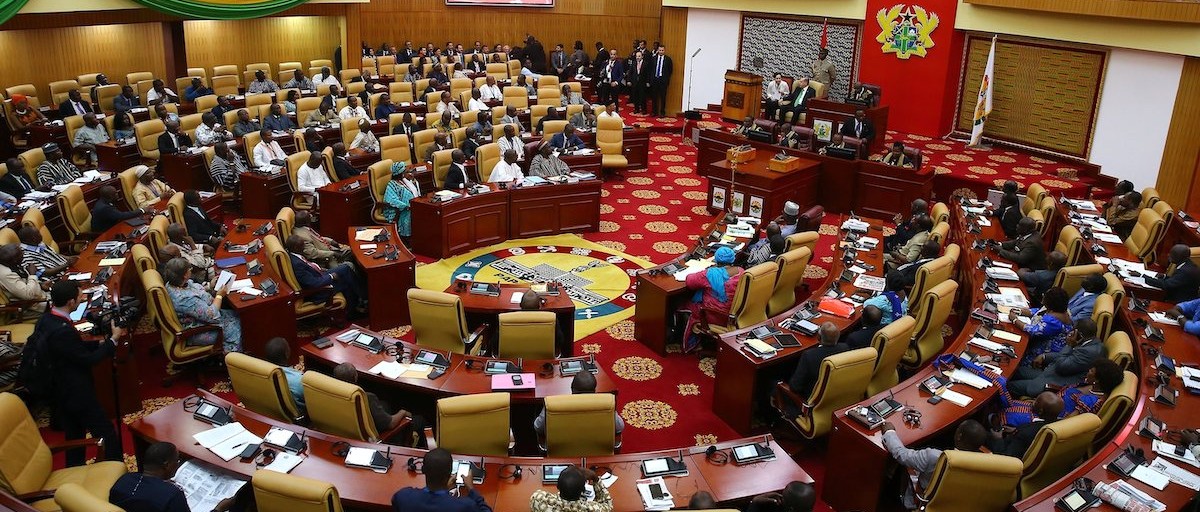
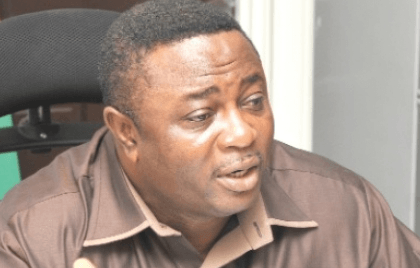

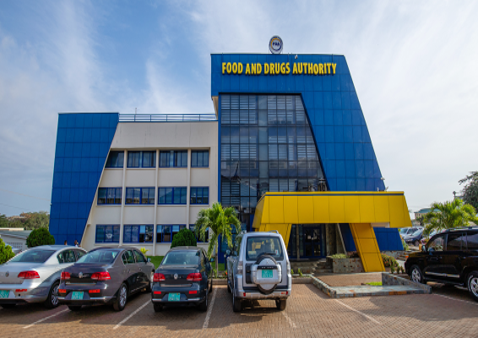
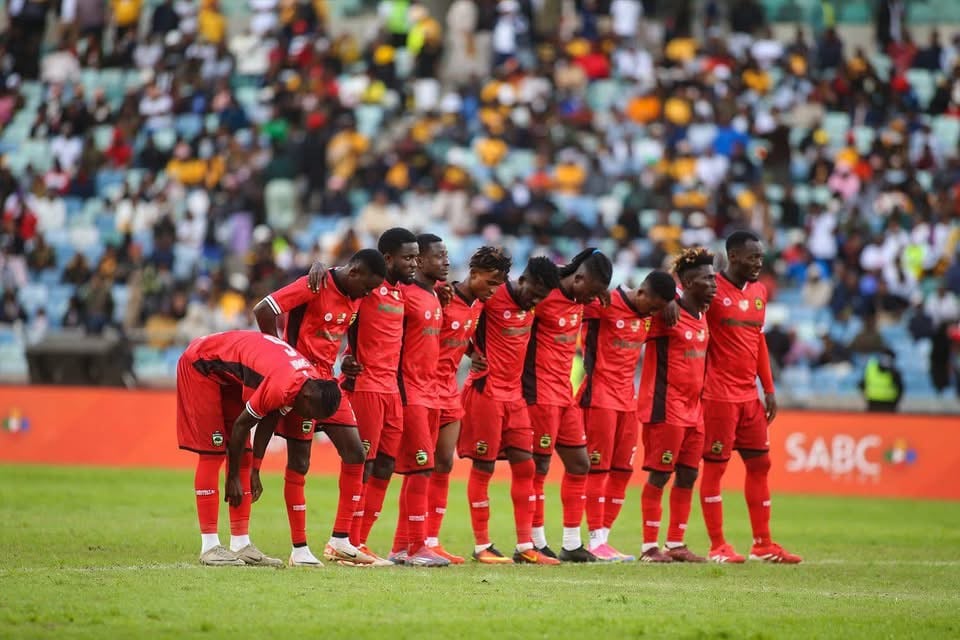

Facebook
Twitter
Pinterest
Instagram
Google+
YouTube
LinkedIn
RSS